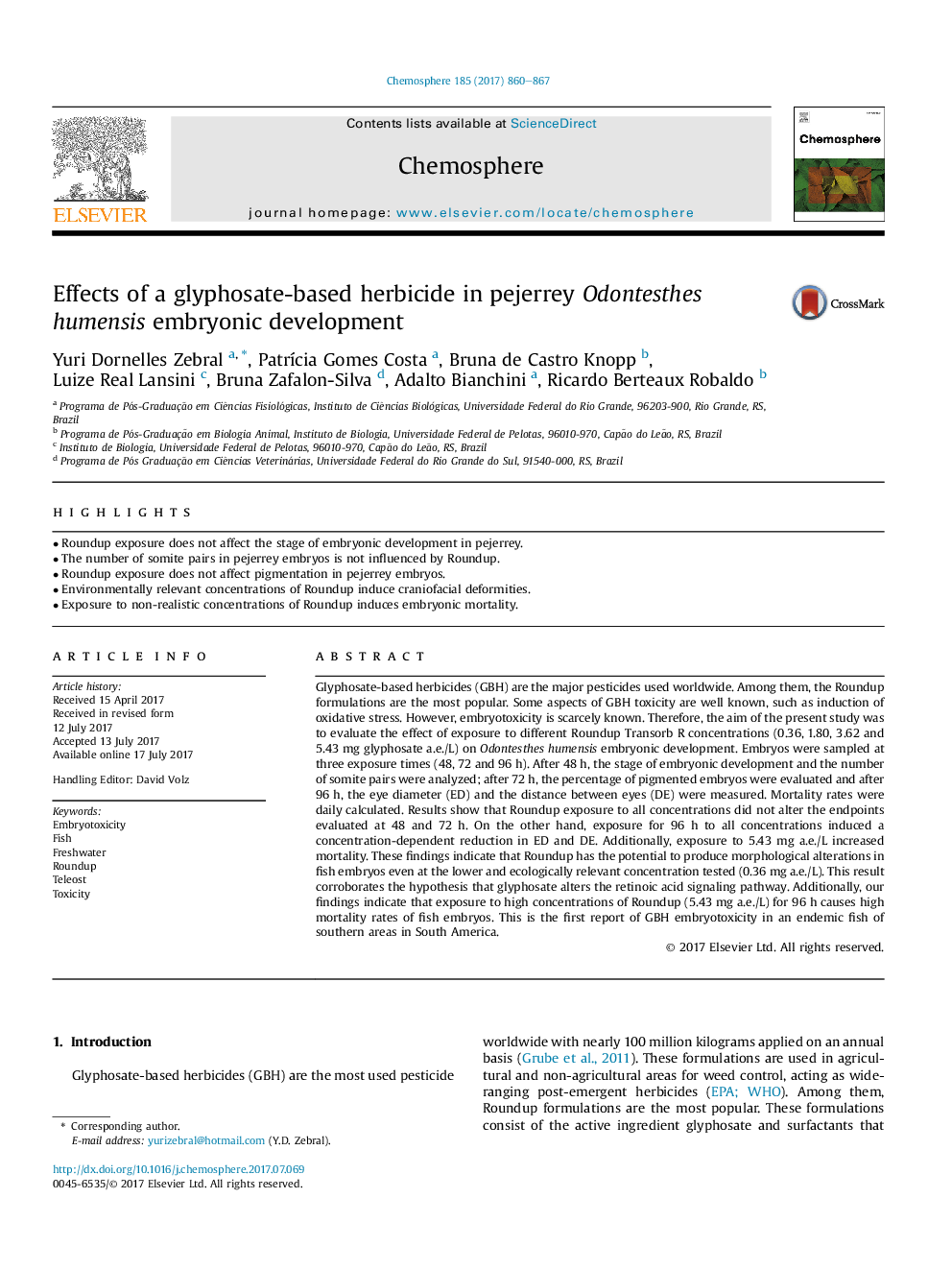| کد مقاله | کد نشریه | سال انتشار | مقاله انگلیسی | نسخه تمام متن |
|---|---|---|---|---|
| 5746762 | 1618786 | 2017 | 8 صفحه PDF | دانلود رایگان |

- Roundup exposure does not affect the stage of embryonic development in pejerrey.
- The number of somite pairs in pejerrey embryos is not influenced by Roundup.
- Roundup exposure does not affect pigmentation in pejerrey embryos.
- Environmentally relevant concentrations of Roundup induce craniofacial deformities.
- Exposure to non-realistic concentrations of Roundup induces embryonic mortality.
Glyphosate-based herbicides (GBH) are the major pesticides used worldwide. Among them, the Roundup formulations are the most popular. Some aspects of GBH toxicity are well known, such as induction of oxidative stress. However, embryotoxicity is scarcely known. Therefore, the aim of the present study was to evaluate the effect of exposure to different Roundup Transorb R concentrations (0.36, 1.80, 3.62 and 5.43Â mg glyphosate a.e./L) on Odontesthes humensis embryonic development. Embryos were sampled at three exposure times (48, 72 and 96Â h). After 48Â h, the stage of embryonic development and the number of somite pairs were analyzed; after 72Â h, the percentage of pigmented embryos were evaluated and after 96Â h, the eye diameter (ED) and the distance between eyes (DE) were measured. Mortality rates were daily calculated. Results show that Roundup exposure to all concentrations did not alter the endpoints evaluated at 48 and 72Â h. On the other hand, exposure for 96Â h to all concentrations induced a concentration-dependent reduction in ED and DE. Additionally, exposure to 5.43Â mg a.e./L increased mortality. These findings indicate that Roundup has the potential to produce morphological alterations in fish embryos even at the lower and ecologically relevant concentration tested (0.36Â mg a.e./L). This result corroborates the hypothesis that glyphosate alters the retinoic acid signaling pathway. Additionally, our findings indicate that exposure to high concentrations of Roundup (5.43Â mg a.e./L) for 96Â h causes high mortality rates of fish embryos. This is the first report of GBH embryotoxicity in an endemic fish of southern areas in South America.
Journal: Chemosphere - Volume 185, October 2017, Pages 860-867